Beer is great – it isn’t just a dependable drink but also has a rich history of being a reliable source of non-polluted water.
Anyone looking to start up homesteading is bound to get involved in making beer themselves. After all, if you have some land and an interest in beer, it doesn’t take much imagination to begin to contemplate making your own. However, unless you already know what you are doing or have worked in a brewery, it might seem pretty challenging to get started.
So, how do you get started brewing at home?
The Easy Way
By far, the easiest way to begin home brewing your own beer is to buy one of those ready kits that are sold in all sorts of Homeware stores.
They are usually tucked away towards the back, but most stores focused around home crafts, hardware, or anything to do with the home will tend to have a little section dedicated to brewing at home.
The kits will usually be a container that holds all of the necessary ingredients, including the malt, yeast, and anything else you need, alongside a list of other pieces of equipment you might need. Things like fermenters or bottling equipment will probably be explained in the kit, or the kit itself will contain it for you.
Realistically, though, doing that isn’t really like home brewing. It is sort of like calling paint by numbers the same as really painting – there is nothing wrong with it, and it is a great way to get drinkable beer, but it isn’t really the same thing as getting started doing home brewing.
Related: Are You A DIY-er?
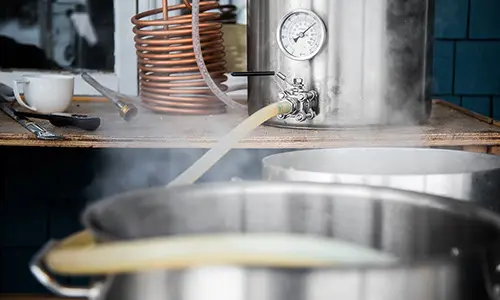
What Is The Home Brewing Process In A Nutshell?
The fundamental methods of making beer are pretty simple.
You take grain, typically barley, that has been slightly heated to dry it out and encourage the preservation of certain enzymes, and grind it up into a consistently small particle size.
You then “Mash” this grain mixture in water that has been heated between 145 Fahrenheit and 158 Fahrenheit. This specific range encourages the enzymes within the grain to begin working, as you are essentially replicating the process that a grain undergoes when it is planted in soil.
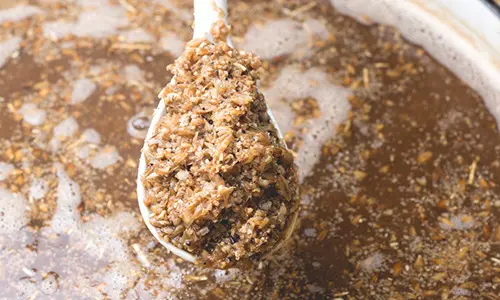
It takes in heat and water and then activates to start sprouting into a barley plant. Only instead of trying to encourage a plant, we just want the enzyme to start breaking down the starch in the grain into fermentable sugars, typically a sugar called Maltose.
From there, we boil the mixture, both to sterilize the wort and to help reduce the water content. We also had hops, which helped to give the beer a pleasantly bitter flavor, as well as help keep it free from bacteria.
After that, it is cooled, locked into a fermenter with an airtight seal (albeit with an airlock to allow carbon dioxide to escape), and then yeast is added. This yeast ferments the beer, eating the sugars and creating alcohol and CO2, turning it into beer!
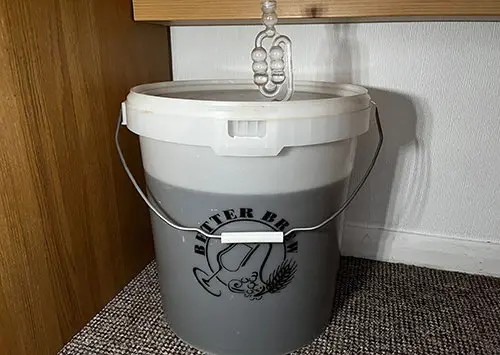
How Do You Go About Doing All This Yourself?
What Equipment Do You Need To Get Started?
Alright, you have committed to home brewing, and maybe you even have a few recipes you want to try. Where do you go from here?
The first thing you will need is the right equipment.
There is a whole lot of debate surrounding the proper equipment needed for homebrewing, preferences of equipment styles, different ways of doing things, and even some cultural and regional standards as well.
The easiest, though a probably most expensive option, is to simply buy a home brewing machine.
There are a few brands which make a series of really great brewing machines, which are electrically powered and allow you to mix, mash and boil all within the same piece of equipment.
Related: 10 Easy Ways to Turn Profit from Your Homestead
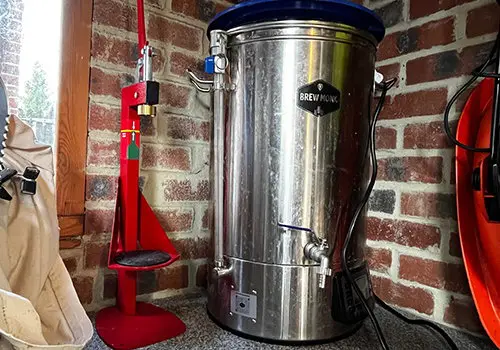
However, if that expense is too much, then you can easily just use a very big kettle on your kitchen burners, at least 10 liters in volume, to let you do it all from the comfort of your kitchen.
From there, you will need the actual grain; you can either get it ready-made as a sort of concentrated maltose solution, or you can buy the grain yourself, grind it and mash it to get it to the same stage.
You will also need whatever hops your recipe calls for, as well as a suitable yeast – careful you don’t pick the wrong one! There is a lot of different types of beer yeast, and they all have different flavors and effects.
From there, you will need a device to ferment the beer, typically called a ‘fermenter,’ as well as some equipment to help bottle it once it is ready. Bottles, bottle caps, bottling wands, and some way to actually cap the bottles at the very minimum. Once your beer is fermented, you will want to move it into the bottles using a racking cane and then cap it, along with some carbonation drops or a calculated quantity of sugar. If you’re sure that you’ll use all of this beer in a short period of time, you can keep all of it in a barrel.
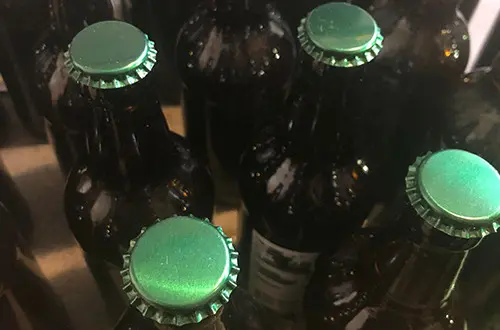
This last addition of sugar helps the remaining yeast in the beer create a little bit more CO2, just enough to carbonate the beer to your liking and give it the necessary fizziness.
All told, the process is a little bit complicated, but it truly does easier the more you get into it.
For even more help and advice, consider joining your local home brewing association branch and attend some meetings – they’re basically everywhere, and they will be glad to help you get started.
You may also like:
This Homemade Device Can Power Up Your Entire House 7 Days in a Row (Video)
DIY Cheap & Portable Washing Machine
9 Little Tricks To Save Electricity At Home Big Time
How To Make A Mini Root Cellar In Your Backyard In Less Than Two Hours

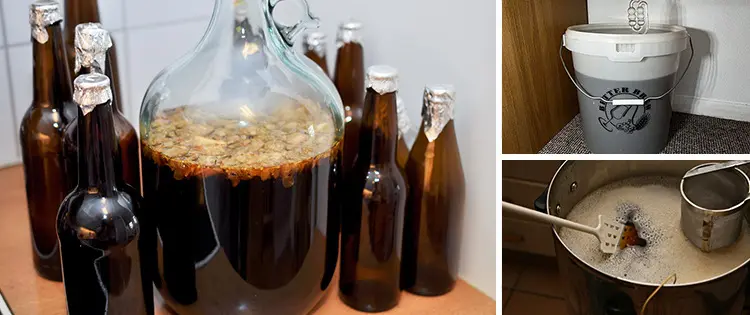














Ummmm, this author describes barley that has been “slightly heated” as the barley you use for making beer. In reality the barley that is used for beer has been fully malted. Malting requires a process of steeping in water, sprouting to convert starch to sugar and then kilning to stop the sprouting process when the kernel is fully modified. Just simply buying barley at the store and following the instructions in this article will not produce beer and would actually be dangerous. If you want to try home brewing you need to buy malted barley.
Thanks for your input…you are exactly correct.
Also, for anyone looking for equipment and/or beer kits, please visit winekitztoronto.ca. They carry a good selection of beer kits and basuc equipment kits to get you on your way to making you’re very own delicious beer.
Kind of hard to add yeast once your wort is locked into a container, isn’t it?